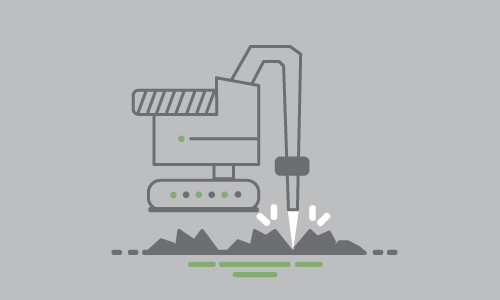Pollution control equipment can significantly reduce the amount of volatile organic compounds (VOCs) released through manufacturing processes. Facilities using toxic solvents or generating high levels of VOCs must install abatement technology to meet standards set by the Environmental Protection Agency (EPA). These units destroy harmful compounds, reducing a facility’s overall emissions and allowing manufacturers to reach production goals.
However, in order for this system to work productively, the equipment must be carefully installed and maintained. Geotechnical reports are an important part of any facility’s long-term emission control strategy. Soil quality under and around pollution control equipment can impact the design, installation, and efficiency of the unit. Geotechnical engineers assess the subsurface conditions of proposed or existing sites and produce comprehensive reports on their findings.
What Is Included in a Geotechnical Report?
A geotechnical report reveals the conditions of subsurface rock, soil, and water found under and around proposed construction sites. This data is collected by professional geotechnical engineers and provided to plant owners and construction personnel. Although the details of each report vary between locations, the following data is typically included:
- Summary of soil types, strengths, and densities.
- Test results from on-site and off-site experiments.
- Activity logs for all procedures performed on- and off-site.
- Data on ground-water and any current contaminants.
- Seismic data, if applicable.
- Analysis and recommendations for engineering teams and design personnel tasked with installing emission control units.
- Solutions to any anticipated problems discovered during the report.
Engineers must meet standards set by the American Society for Testing and Materials (ASTM), and report any relevant contaminations to facility owners and governing bodies.
Why Are Geotechnical Services Important When Installing Emission Control Units?
Without employing the services of geotechnical engineers before installing a unit, manufacturers risk positioning expensive equipment on erosion zones, lava caps, unstable bedrock, mudflow areas, or soils with high liquefaction potential. Pollution control systems often included highly sensitive monitors with narrow calibration tolerances. Any shifts or instabilities with subsurface foundations can interfere with these instruments and produce inaccurate emission readings.
If placed on loose bedrock, the equipment may become unsteady, causing long-term structural damage. Units operating on frost-susceptible soil may also be placed at risk, as extreme temperatures can impact the integrity of the foundation.
Geotechnical Services for Installed Units
Geotechnical engineers can help assess soil conditions after a unit has been installed. If a survey was not completed during the initial installation, new reports can be used to pinpoint any structural issues caused by erosion or subsidence. If the subsurface soil is not equipped to support excessive weight or handle high levels of drainage, engineers and emission control specialists can use geotechnical reports to reach informed solutions.
Employing the services of geotechnical engineers can help plant owners find the best locations for their thermal and catalytic oxidizers. Suppliers, such as CMM Group, offer both geotechnical services and pollution control solutions. By enlisting the services of companies like CMM Group, manufacturers can complete necessary geotechnical reports and install efficient RTOs at the same time.




